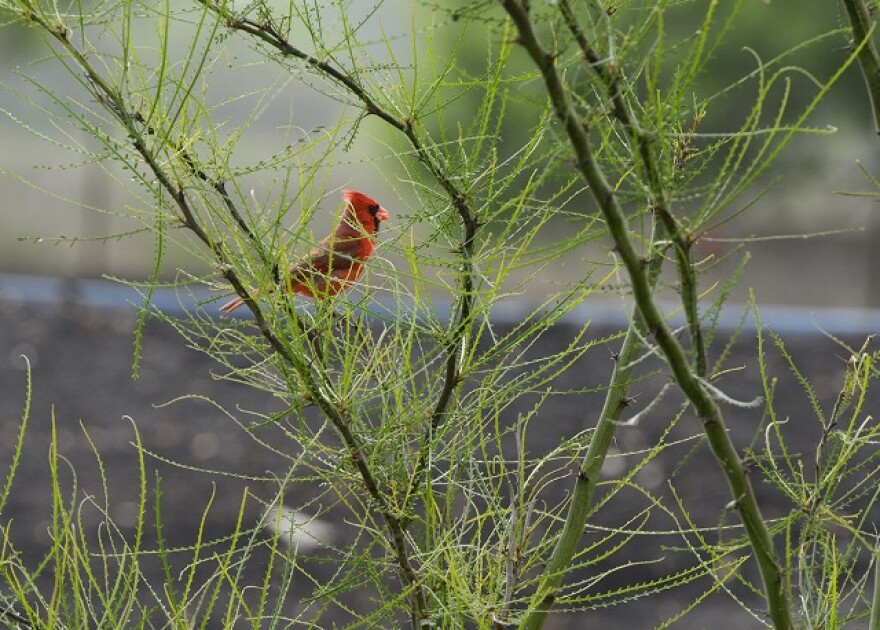If you tune into the news, you’ll see people and nations disputing boundaries. These disagreements might involve guns, artillery, and bombs, or they may be legal wars that wind their way through courtrooms for years before anyone gets a definitive answer regarding who owns what. Since the beginning of time, humans have wrangled over property lines. After watching two male cardinals duke it out last week, I’ve decided people ought to settle their differences the way birds do—with song.
As a kid, I thought birds sang because they were happy. When I grew up, I learned they generally sing to attract mates or to establish and defend territory. Scientists who study such behaviors can tell you exactly how many tunes an individual species sings. According to one observer, brown thrashers produce 2,000 different songs while the Henslow sparrow has a repertoire of only one. That’s a lot of watching and recording to determine what’s going on in the bird world.
In North America, we hear mostly male birds because typically they initiate courting behavior and establish or defend territory. Researchers discovered that playing a recording of another male house wren’s song triggers hostile behavior in listening wrens. They also know that if they remove these guys from their native habitat and play recorded territorial songs, a transplanted bird rarely invades the new region. The other fella’s melody establishes clear boundaries without bloodshed or violence.
Recently, I saw this in action. While walking about town, I heard competing cardinals calling back and forth across a street. I wanted to photograph these scarlet beauties so I stopped to look for the source of the racket. As they hurled insults back and forth, one crimson chap hid among the leaves of a tall tree while his opponent clung defiantly to a wire strung between telephone poles.
As I watched, their volume increased. If bird body language is anything like that of humans, the creature on the line was agitated. He wanted that other guy GONE. I observed their trilling for five minutes until I realized their duel could go on all day. I returned the next morning to see if the warbling warriors were still sparring, but silence reigned over the neighborhood. The feud ended without a single casualty.
While I finished that morning stroll, I had much to consider. What if humans sorted out their differences through song? Would folks like me who can’t carry a tune but possess a loud voice have an advantage? Would others give in to shut us up? Maybe the contest would be like TV shows where celebrities declare a winner.
In the human world, I’m sure a third party would settle the issue, but I’m uncertain whether scientists know how birds determine a victor. They only know that birds select mates and settle territorial conflicts through song.
It makes me wonder what John Lennon thought about as he wrote these lyrics, “There’s nothing to kill or die for” in his song “Imagine.” Perhaps he too watched birds settle differences by trilling memorable tunes and envisioned settling disputes without violence.







